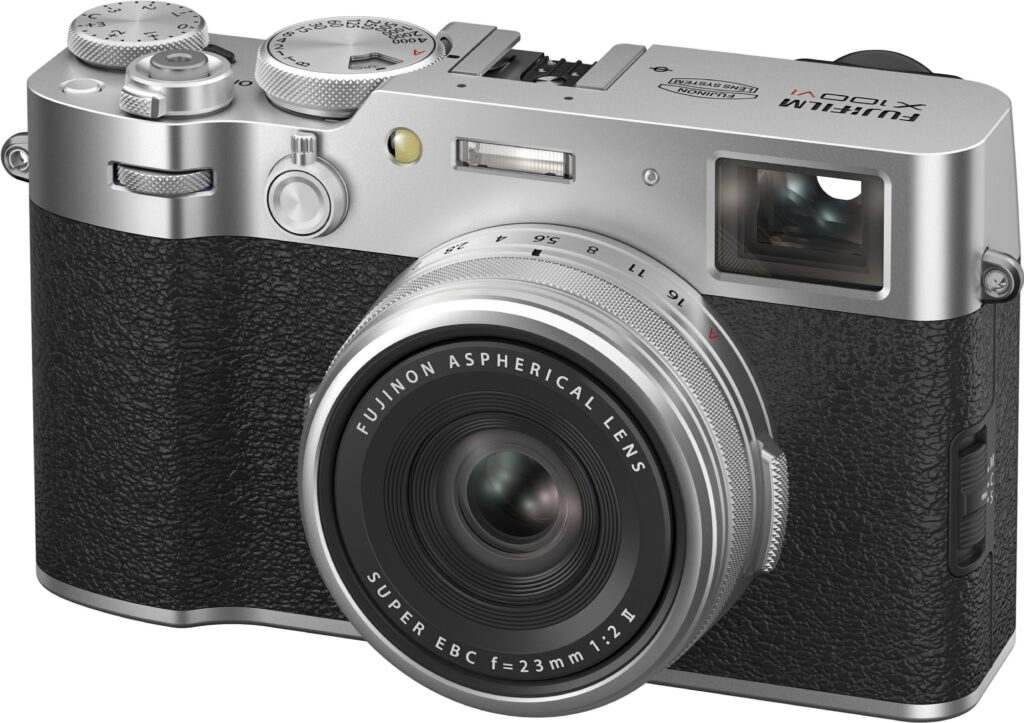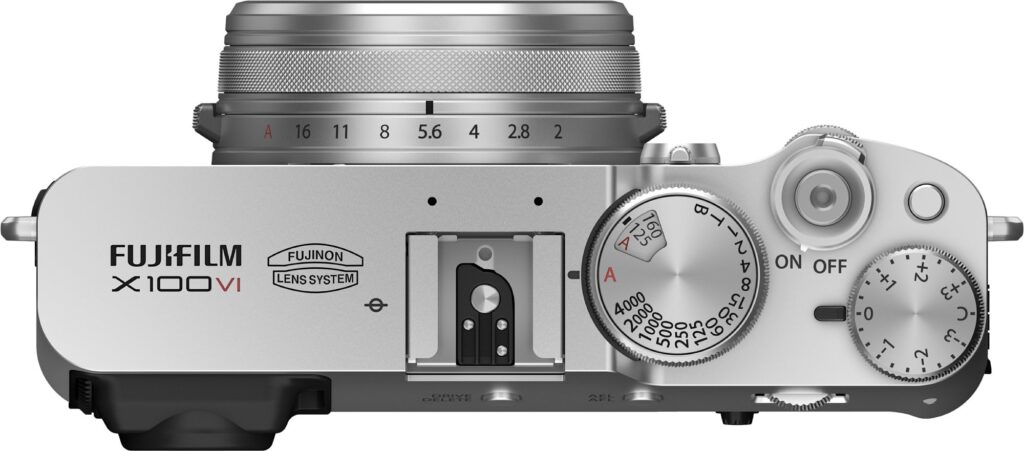Fuji announced the latest version of the X100 camera series at its X Summit Tokyo event this week. The release of the Fujifilm X100VI is part of the company’s 90th anniversary celebrations. So, what new features will photographer’s gain access to in this upgrade to the existing model? And is this the camera Leica should have launched after the end of the X series?


The Fujifilm X100VI is a fixed focal length, APS-C sensor camera with hybrid optical and digital viewfinder. Earlier versions have been highly sought after and a great success for the company. It features tactile controls, akin to those found on Leica cameras, appreciated by photographers seeking a more traditional photographic experience. In so far, the sixth iteration of the X100 is not really revolutionary. But I think we can be sure that it will be a massive success. It is not by chance that Fujifilm highlighted on the launch day that availability will be good from the very start.
On first inspection, the latest version, which will be available in stores later this month, looks no different to its predecessor. However, it possesses several features that add up to a tempting package and might well attract new customers. Some earlier models will come to the used market for sure, and they will sell well. The value retention of the X100 models is almost legendary, and second-hand prices were skyrocketing for a time when the X100 became the influencers’ darling and Fujifilm had no chance to meet the demand.
The Fujifilm X100VI now has IBIS

The most significant upgrade is the addition of a 5-axis in-body-image-stabilisation (IBIS) system. Fuji rates it to 6.0EV of correction. In addition, the camera now has a 40 megapixel sensor, its battery apparently enabling 450 shots per charge. The Fujifilm X100V, which is officially discontinued, had 26MP and no IBIS. The former was sufficient for many users, and there were even voices who said that IBIS makes limited sense for a more or less shake-proof 23mm focal length. But both improvements will be welcomed for sure.
Both the old and the new sensor are of the X-Trans type, which is highly revered by Fujifilm fans. Whether this special array for colour rendering is really better than the more common Bayer filter is much discussed. At any rate, many users swear by the special rendering of the Fujifilm cameras with X-Trans sensors (the lower end models don’t feature this).
The Fujifilm X100VI can load images directly into a cloud
Fuji has also added a capability that could prove very useful: the direct upload of images to the cloud. This ‘camera to cloud (c-2-c)’ system uses the camera’s Wi-Fi system. When connected to a local Wi-Fi network, all or selected images can be uploaded to the Adobe’s Frame.io platform. This could even be attractive for working photographers who have to share images with remote clients in real-time. Think only of photojournalists who can serve their newsrooms without any delay.

The camera possesses the same 35mm-equivalent lens as its predecessor. Its X processor V system employs machine-learning algorithms to enable auto-detection of multiple subject types. The tilting rear screen of previous versions now tilts further, making waist-level shooting slightly easier.
Overall, the camera appears to be an impressive package. The Fujifilm X100VI will retail from the end of February at an MSRP of $1,599 or €1,699 including VAT on most European markets. By the way, the predecessor was launched exactly four years ago, which indicates a slow innovation cycle when compared with other marques. But then again, Fujifilm was hugely successful with the X100V, with long waiting lists right until the very last day before the discontinuation.
Fujifilm X100VI versus Leica Q3
The obvious comparator in the Leica world is its recently introduced and highly successful Q3. Equipped with a 60 megapixel variable resolution sensor, killer 28mm f/1.7 lens, tilting rear-screen, and Leica build quality, it is a stellar package. As well all know, it has a full-frame sensor and not “only” an APS-C sized one. On the other hand, the Leica Q3 costs over three times as much as the Fujifilm X100IV.

For photographers balking at the price of a new Q3, the Fujifilm X100VI might well be a tempting option. Furthermore, the X100V is definitely smaller than the Leica, it has a focal length that is supposed to be more versatile than the 28mm wide-angle of the Q3. So, Fuji’s latest scoop rather raises whether it would have been a good idea for Leica to go on with relatively affordable, compact, fixed-lens APS-C cameras. Just think of a X1 with all the research and development that Fujifilm put into the X100 series.
So, it is quite possible that the new Fujifilm X100IV will find a good home with many Leica owners. For city trips, hiking tours and the like, it is an easy-to-use solution that can bring excellent results. And while considerably bigger and heavier than the marvellous Ricoh GRIII models, it sports a viewfinder. And this even one that is Leica-esque to say the least. Version VI retains the unique hybrid viewfinder that can transform from an optical viewfinder into an electronic one at a flick of the finger. Very retro and smart at the same time — and as such a finger pointing in the direction of Wetzlar…
Here is a brief review from PetaPixel
A detailed review of the Fuji X100VI is also available at DPreview.
Read more about the Fuji X100 series here
Join the Macfilos subscriber mailing list
Our thrice-a-week email service has been polished up and improved. Why not subscribe, using the button below to add yourself to the mailing list? You will never miss a Macfilos post again. Emails are sent on Mondays, Wednesdays, and Fridays at 8 pm GMT. Macfilos is a non-commercial site and your address will be used only for communications from the editorial team. We will never sell or allow third parties to use the list. Furthermore, you can unsubscribe at any time simply by clicking a button on any email.


Sony should really make the next iteration of their rx1r series. I had one and it really was one of the best cameras I ever had. Even if they keep the same lens but bring the model to the latest spec, that would be great.
The new X100VI is certainly going to be popular out of the gate. I stopped into my local dealer yesterday and asked about their pre-order list, with the idea I may put in my order. I was told that the list was long and growing. The prediction was, if deliveries were similar to other super popular cameras, the wait would be over a year to rise to the top.
I don’t know if Leica should be making a competing camera, but Panasonic certainly should. With a high resolution M43 sensor, IBIS, and a good 17mm lens, Panasonic could make in roads into Fuji’s market.
PaulB
A good point about Panasonic. There could be a niche for an M43 fixed-focal length camera, perhaps based on the LX100/D Lux. But Leica’s forthcoming revised D Lux will almost certainly have a zoom lens like its predecessor. It is interesting how the Q3, X100 and GRIII are all so popular, proving the attraction of a wide, fixed focal length.
Of course you are right, based on the popularity of the X100 series. But not for me. When I first entered the digital age (for personal photography)I liked the X100 but bought the Fujifilm X20, because it had a zoom lens. That was Spring 2014. I only decided to switch to X100S when Fuji came out with the supplemental lenses. I think it was later that same year.
But once I felt I could afford a used Nikon Df, that is the direction I went in. The ability to use MF AiS lenses, plus so many AF-D lenses, were big reasons. Not to mention that for most of my photographic life I had been a Nikon man.
“Leica’s forthcoming revised D Lux will almost certainly have a zoom lens like its predecessor”
Mike, that sounds pretty definitive – is it?
Not really. It just seems to me that a replacement for the D Lux will be some sort of upgrade rather than a completely new camera. But of course I could be wrong.
I owned the Fujifilm x100v and loved the fabulous colours and Leica like usability. I sold it fir more than I Paid for it. What a delightful experience. I was on the X100VI list with my local camera store before it was announced do I am excited to get it. It is a better value for me compared to the rest incredible Leica Q3. I owned the Leica Q2 but the colours of the Fujifim suit ke better.
For me, as a FujiFan, these changes are very exciting. I doubt I’m alone in having a certain Q2/Q3 envy!
I’d really like to see these changes in the ILC Fuji line-up, particularly the XE and XPro series. As your article quite rightly points out, the fixed lens on the X100 series is hardly competition for the Leica Q lenses.
In my case, I often use Leica M lenses on a Fuji APS-C camera. Of course the APS-C sensor doesn’t have Leica’s microlenses. though I haven’t seen edge issues.
Does anyone out there know whether the smaller sensor obviates the need for those microlenses?
In any case, it’s an exciting development.
Jason, thanks for this review!
The X100 series is what got me to finally join the digital age for personal photography. (I used digital point-and-shoots for several years prior in my work as an engineer).
Ultimately I switched back to Nikon when I could finally afford a Df, eight years after the Df was introduced.
Let me just say, for those who have never picked up a Fuji X100 model, or the X-Pro models, that hybrid viewfinder is just amazing.